Are you feeling hungry? Just the mere mention of dumplings can make your mouth water. Little, delicate parcels of deliciousness and joy! Asia is king of the dumpling and all dumpling roads tend to lead to China in some form or another.
A self-confessed dumpling aficionado, Emma Prineas is the Senior PR and Marketing Manager at Wendy Wu Tours. Come on a delectable journey through the dumplings of Asia with Emma. Which is your favourite?
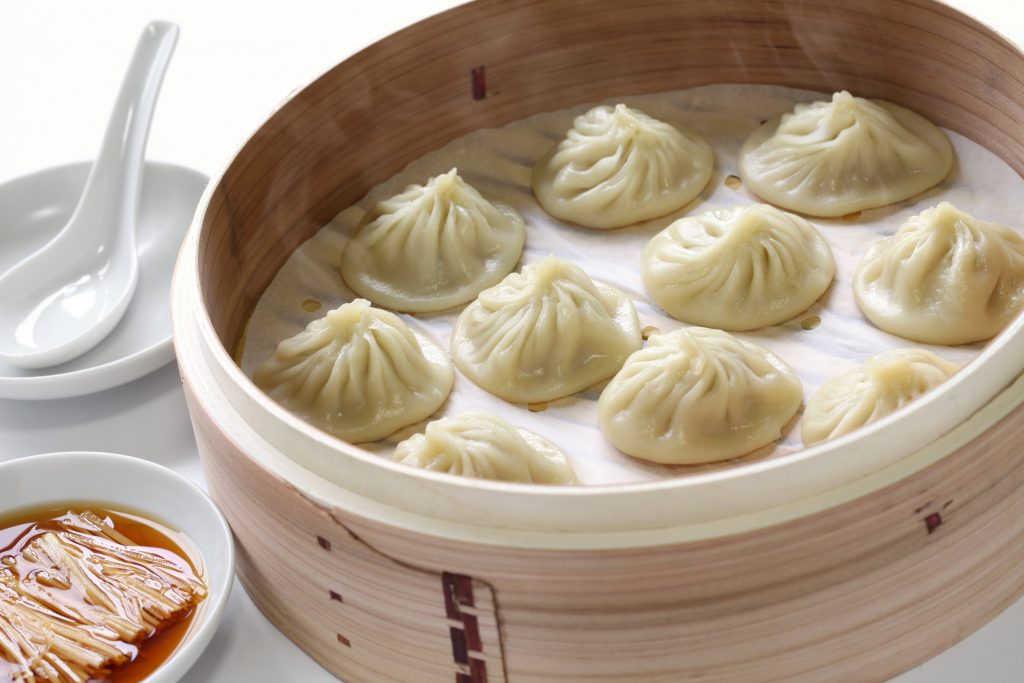
Shanghai’s Xiao Long Bao –
‘soup-dumplings’
Shanghai: Xiao Long Bao
Shanghai’s famous Xiao Long Bao is the solution to the age-old “soup or dumpling” lunchtime dilemma. Take a traditional ‘bao’ dumpling, and fill it liberally with soupy deliciousness. It is essential to note that there is a wrong way to eat these. While there is burnt mouth potential, you must sip the broth from the dumpling. Don’t stab it, let the hot broth run out and therefore waste the flavours! Follow this Xiao Long Bao etiquette as the broth flavours are unadulterated joy!
Sri Lanka: Dhal Roti
Found in roadside stalls all over Sri Lanka, along with a selection of other “short eats”, dhal roti are roti… but not as you know it. The pastry is stretchy and fresh. They are cooked on a hotplate, then lathered in either dhal (lentils), beef or even fish curry. Finally, the cook folds them into a little parcel. Triangle-shaped denotes dhal. Long and sausage-roll-esque denotes beef. Ideal for a snack, or lunch, these little morsels will set you back a mere AUD20c.
India: Samosa
Samosas are decadent, deep-fried, and packed with spicy curry goodness! Made by millions of grandmothers throughout India they are abundant in the food stalls of train stations, street markets – actually, quite literally anywhere! Served with a cooling yoghurt raita to dull the heat, or with a tang of tamarind chutney, the samosa is a snack that you can almost fool yourself that they seem to be healthy!
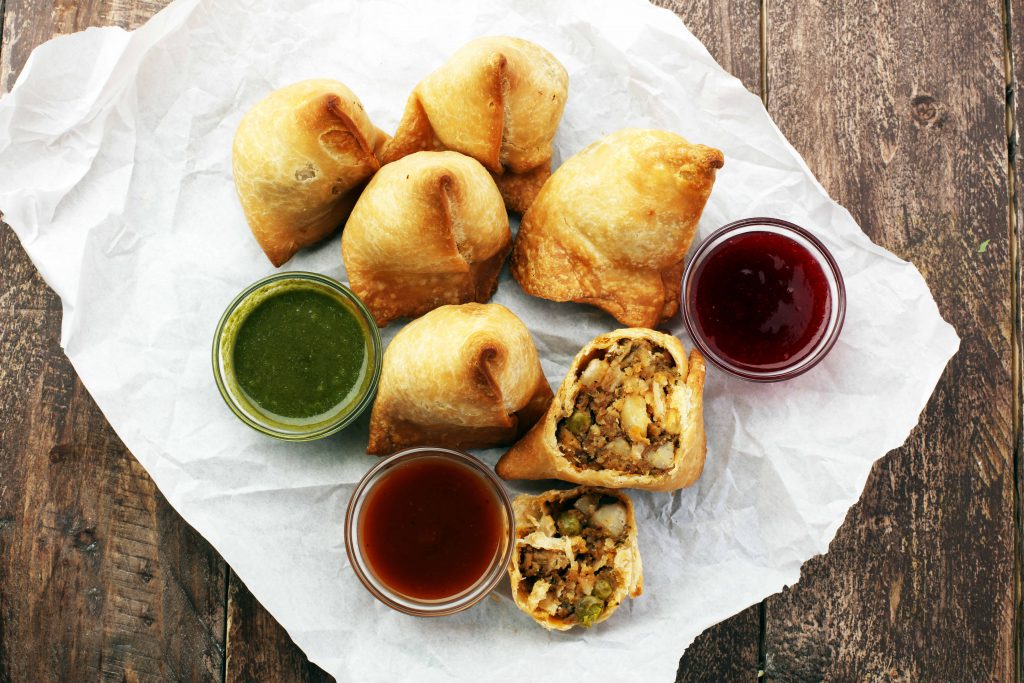
Indian Samosa
Japan: Gyoza
Panfried, crispy gyoza are high on my list of dumpling champions. Expert palettes will notice the gyoza has a more prominent garlic flavour than the typical dumplings of Asia, even though the gyoza is a direct descendant of the Jiaozi Chinese dumpling. Yaki-gyoza are filled to bursting with cabbage, chives and sesame oil. They are pan fried on one side and the result is pure pleasure.
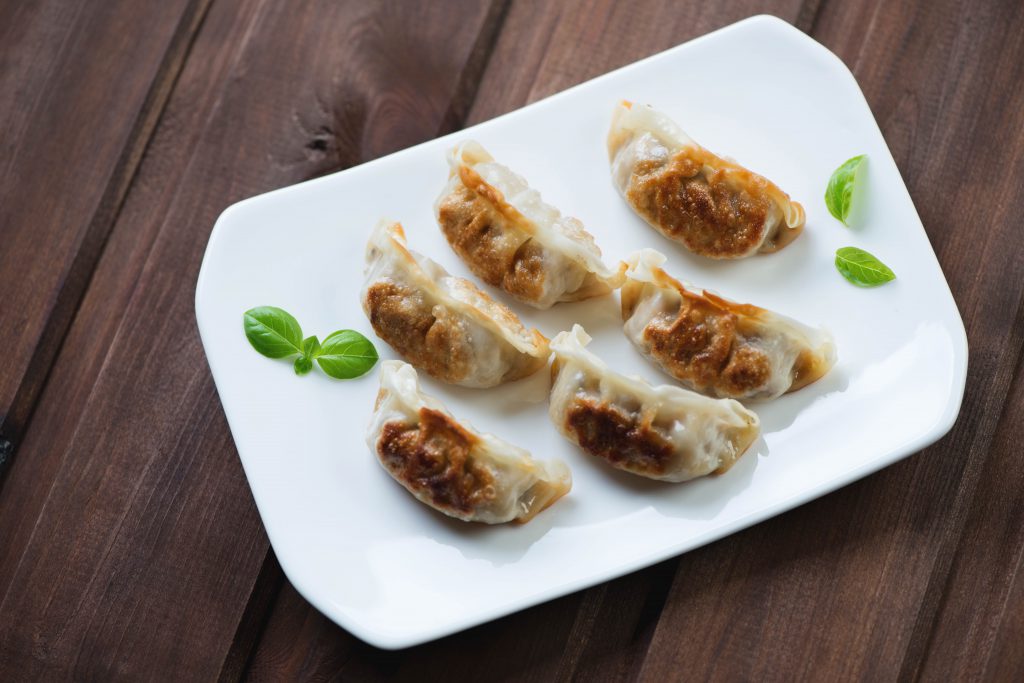
Gyoza Dumplings
Thailand: Moneybags
Where samosa meet har gow in the world’s best street stalls, sit Thailand’s moneybags. Small, crispy and deep-fried, little purses filled with a mixture of minced chicken or pork, neighboured with prawns, mushrooms and also crunchy water chestnuts. They are dipped into sweet plum or sweet chilli sauce too. While they aren’t bursting with nutrition, they are the perfect accompaniment to an ice-cold beer. Despite their name, they will not make you rich, but are certainly cheap as chips on a Saturday night and one of the most famous dumplings of Asia.
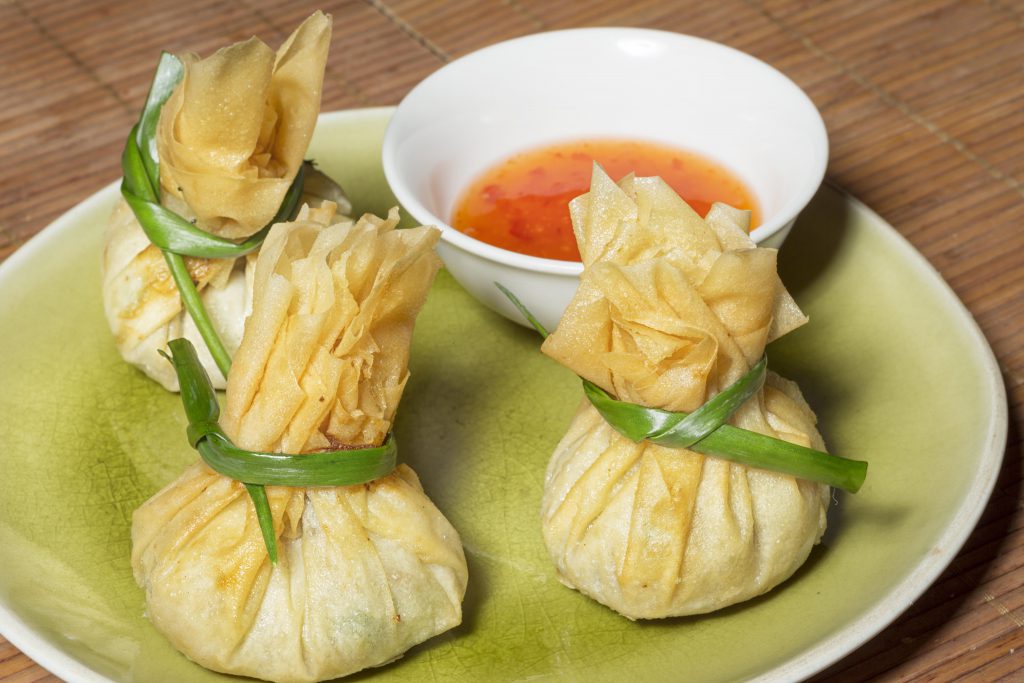
Thai Money Bags
Mongolia: Khuushuur
Street food (or dumplings for that matter) is not necessarily something we associate with Mongolia. These tasty, handheld pockets are created using seasoned beef or mutton enveloped in a circle of wheat flour dough and fried. They are synonymous with the national celebrations of the Naadam Festival and have origins in China, given Mongolian nomads traditionally didn’t farm wheat. They are also known to be a celebrated comfort food. I’m all for any comfort foods!

Khuushuur Dumplings
Vietnam: Summer Rolls
Purists will argue that Vietnam’s summer roll is not a dumpling as such. However given they are made of rice paper, enveloping a mixture of pork and prawn, and topped with spring onion and coriander… plus they are small enough to hold in your hand… definitions, be gone! These are arguably the healthiest of the dumplings of Asia. They also come with a delicious peanut and tamarind dipping sauce. In addition, fillings can be adapted to include almost any fresh ingredients you have available.

Rice Paper Rolls
Tibet & Nepal: Momo
The shared Tibetan and Nepali momo is made to eat on a Himalayan mountain. They are sizable enough to keep you full and also snug on the inside for hours. Traditional momo are full of ground buffalo – although for the less adventurous, you’ll easily find them with lamb or chicken. Add in garlic, ginger, cumin and coriander; serve with sepen chilli sauce and….voila! These little beauties are my personal favourite, and could almost pass for healthy. Almost.
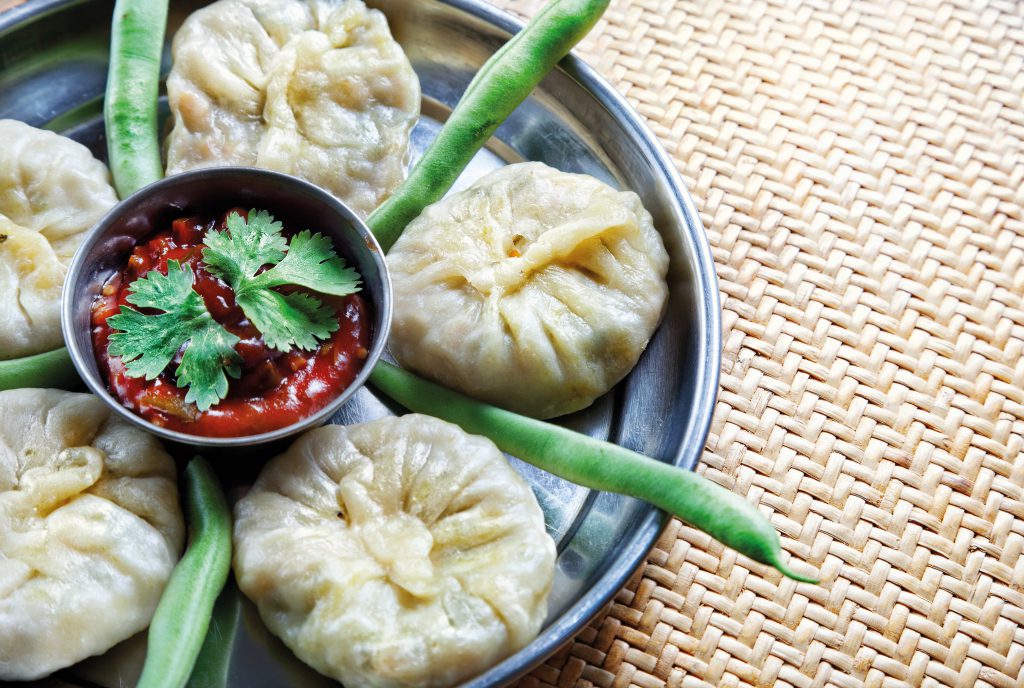
Momo
South Korea: Mandu
When creating Mandu, the Koreans use different cooking techniques, including boiling, steaming and frying. Mulmandu are boiled dumplings, jjinmandu are steamed, and gunmandu are fried. Fillings are pork, beef, seafood or Korea’s iconic kimchi. It seems that kimchi can officially be included in anything! Mandu are popular during celebrations and families consequently spend quality time together creating them to share. In additional they are great winter warmers for cold days. Mandu date back to the Goryeo Dynasty when a group of Chinese Uighurs arrived and opened up dumpling shops, but there are a number of variations to this tale.
Hong Kong: Har gow
Ubiquitous in Yum Cha establishments all over Australia, har gow are the traditional Hong Kong Chinese dumpling that we know and love. Silkily stuffed with prawn and steamed to perfection, these are probably the ideal test of skill for a dumpling chef. The perfect haw gow dough is thin enough to show off the delicate pink of the prawn inside. One-by-one, the sides are pleated delicately. It’s a thing of beauty, and where I first fell in love with the dumpling. Thank you, har gow!

Har Gow
A special ‘dumplings of Asia’ mention to Hong Kong Disneyland‘s character-themed dumplings
Hong Disneyland Hotel creates dumplings of fun, so therefore these need a special mention! The Crystal Lotus restaurant at the Hong Kong Disneyland Hotel offers hotel guests exclusively a Signature Dim Sum menu in the shape of Disney and Pixar characters. Tuck into the fun parcels including Olaf from Frozen and the little green aliens from Toy Story. Most noteworthy, Mickey is there too in pancake and waffle form (not dumplings but deliciously worth mentioning!)
So now that we are all starving… what’s for dinner? Do you have a favourite in all of the dumplings of Asia? Tell us about it!

No,it’s not a dumpling but these waffles rate a mention!
Subscribe to our blog!
Other blogs that may interest you:
6 Reasons Why You Should Stopover in Singapore
Sign up for our free newsletter or request a brochure
